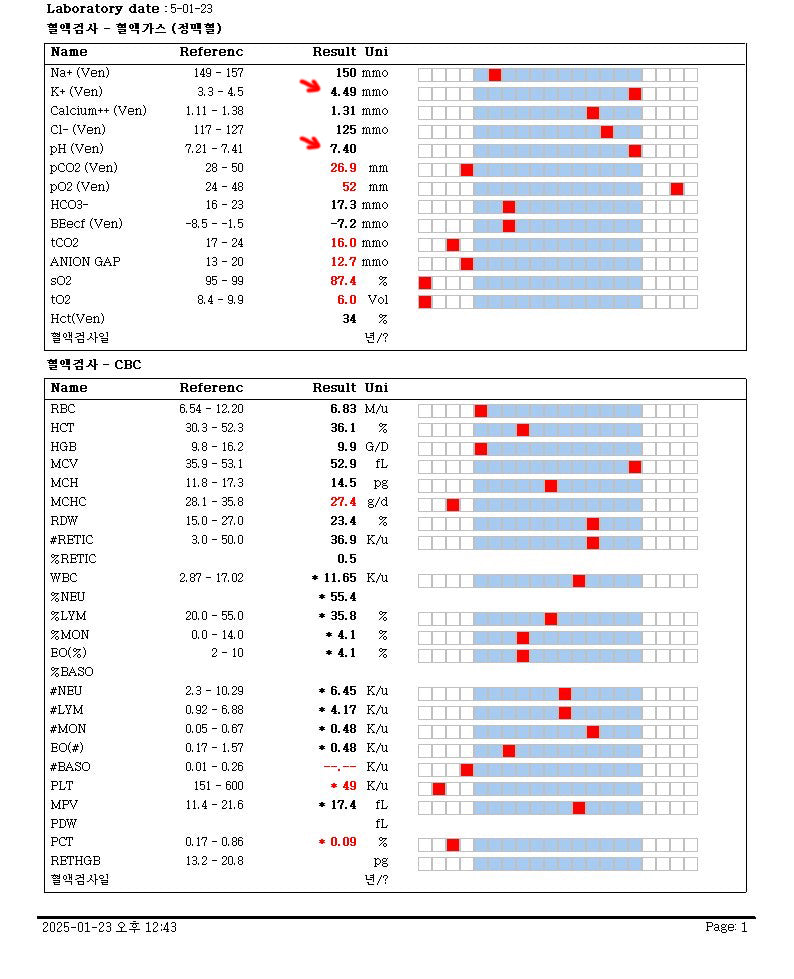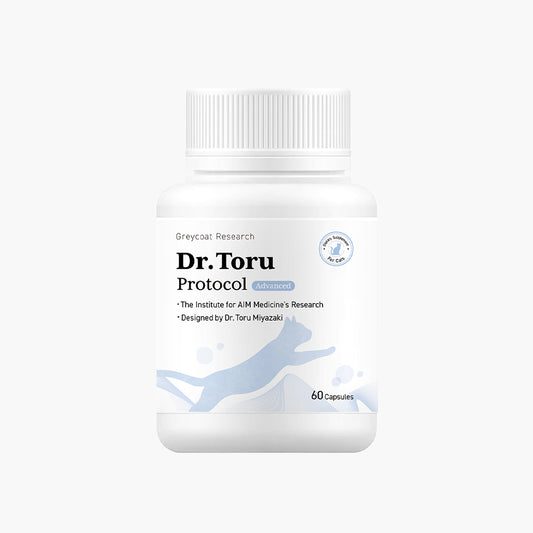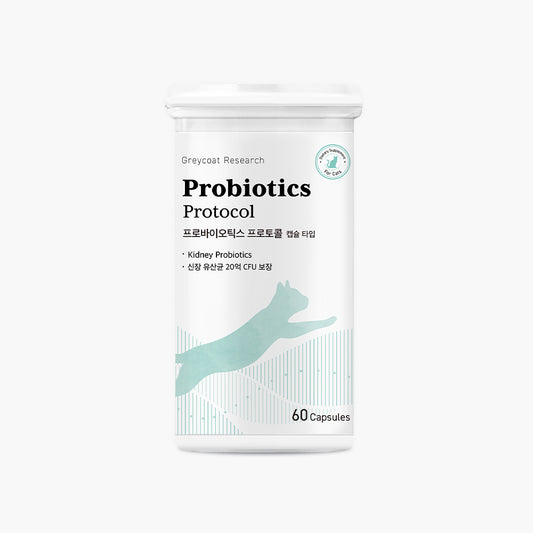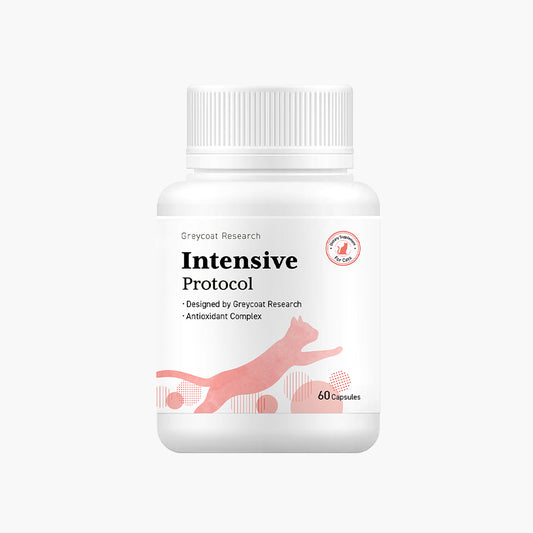
A cat getting a blood test.
Why Won’t Potassium Levels Go Down?
In cats with end-stage kidney disease, blood tests often show abnormally high potassium (K⁺) levels alongside elevated creatinine (CRE) and BUN. Many caregivers attempt to reduce potassium using 0.9% or 0.45% sodium chloride (NaCl) administered intravenously or subcutaneously. This approach aims to increase fluid volume and promote potassium excretion.
Yet in many cases, this approach not only fails to reduce potassium—it can cause potassium levels to rise even further. What causes this to backfire and make potassium levels even worse?
Greycoat Research: Kidney Care Expertise Backed by Data
- Over 1,000 kidney disease consultations worldwide
- Real-world strategies from Dr. Kim Jae-young, caretaker of Korea’s oldest cat (Minky, age 28)
- Clinical insights from Dr. Motoo Kobayashi, with 30 years of experience in feline kidney care
- Supplement and fluid therapy tips from clinical pharmacy expert Shin Yeong-gon
The Real Reason Potassium Keeps Rising
The answer lies in osmotic balance and ion movement. When subcutaneous fluids increase fluid volume, potassium inside the cells can leak into the bloodstream. In cases where metabolic acidosis is present, hydrogen ions (H⁺) move into cells—and to balance the charge*, potassium ions exit the cells and enter the bloodstream.
This phenomenon explains why standard fluid therapy may worsen hyperkalemia. Severe hyperkalemia can trigger cardiac arrest, making precise and prompt treatment essential.
*The “⁺” in H⁺ means the hydrogen ion carries a positive charge. Because H⁺ ions carry a positive charge, their entry raises the charge inside the cell. The cell compensates by pushing out other positively charged ions (especially potassium) to avoid becoming overly charged.
Two Ways to Correct Metabolic Acidosis
To stabilize potassium, metabolic acidosis must be corrected first. Below are two proven, physiology-based methods.
 A cat undergoing subQ fluid therapy.
A cat undergoing subQ fluid therapy.
1. Switch to PlasmaLyte A
PlasmaLyte A contains acetate, which is metabolized into bicarbonate and helps alkalize the blood. This process corrects metabolic acidosis and reduces potassium leakage from cells, resulting in lower blood potassium levels.
PlasmaLyte A is commonly used in veterinary clinics across the US, Europe, and other regions, though it typically requires a prescription or clinical administration. In Korea and parts of East Asia, a comparable alternative called Plasma Solution A is used in veterinary practice.
2. Administer Sodium Bicarbonate
An alternative is to administer bicarbonate directly. Sodium bicarbonate (NaHCO₃) is the most common form—identical to baking soda. Among the different types of bicarbonate, sodium bicarbonate is preferred for cats because it avoids the calcium-related risks seen with other forms like calcium bicarbonate.
This method is effective and easy to use, but must be carefully monitored to avoid metabolic alkalosis. Always follow veterinary guidance.
Why Not Use Calcium Bicarbonate?
- High calcium levels can inhibit AIM protein expression and trigger kidney inflammation.
- Calcium binds with phosphorus, potentially causing kidney calcification.
Tip: Sodium bicarbonate can neutralize stomach acid. To reduce gastrointestinal stress, administer it at least 2 hours after meals when gastric acid has stabilized.
Case Study: Stabilizing Potassium in Cat J
Cat J, a stage 3 chronic kidney disease (CKD) patient under consultation with Greycoat Research, showed worsening electrolyte imbalance. Despite using 0.45% NaCl fluids, Cat J's potassium levels continued to rise.
A blood test revealed slightly acidic blood pH, suggesting unresolved metabolic acidosis. After discussion with the attending vet, Greycoat Research recommended switching fluids to Plasma Solution A. The veterinarian approved the change, and one week later, Cat J’s potassium levels returned to a normal range.
Cat J's blood test results before switch to Plasma Solution A.
Cat J's blood test results after switching to Plasma Solution A.
This case shows that addressing the root cause—acidosis—is more effective than fluid therapy alone for managing hyperkalemia.
Summary: Fix the Cause, Not Just the Number
Trying to lower potassium with fluids alone doesn’t work if metabolic acidosis is ignored. Address the cause, and potassium levels will stabilize.
| Problem | Potassium doesn’t drop with fluids—may even rise |
| Cause | Metabolic acidosis pushes potassium out of cells |
| Solution 1 | Use PlasmaLyte A fluids → Potassium stabilizes |
| Solution 2 | Administer sodium bicarbonate directly → Potassium stabilizes |
| Warning | Excess bicarbonate can cause alkalosis—monitor via blood tests |
Hyperkalemia poses a serious risk to cats with late-stage kidney disease. But if the underlying metabolic acidosis is corrected, potassium can be safely stabilized.
Even a small change can save a cat’s life. Always consult with a veterinarian to determine the safest and most effective treatment plan.
Greycoat Research provides personalized 1:1 consultations for cats with kidney disease, based on data collected from over 1,000 consultation cases. If you’re having difficulties managing your cat’s kidney disease or potassium levels, contact Greycoat Research for a free consultation today.







